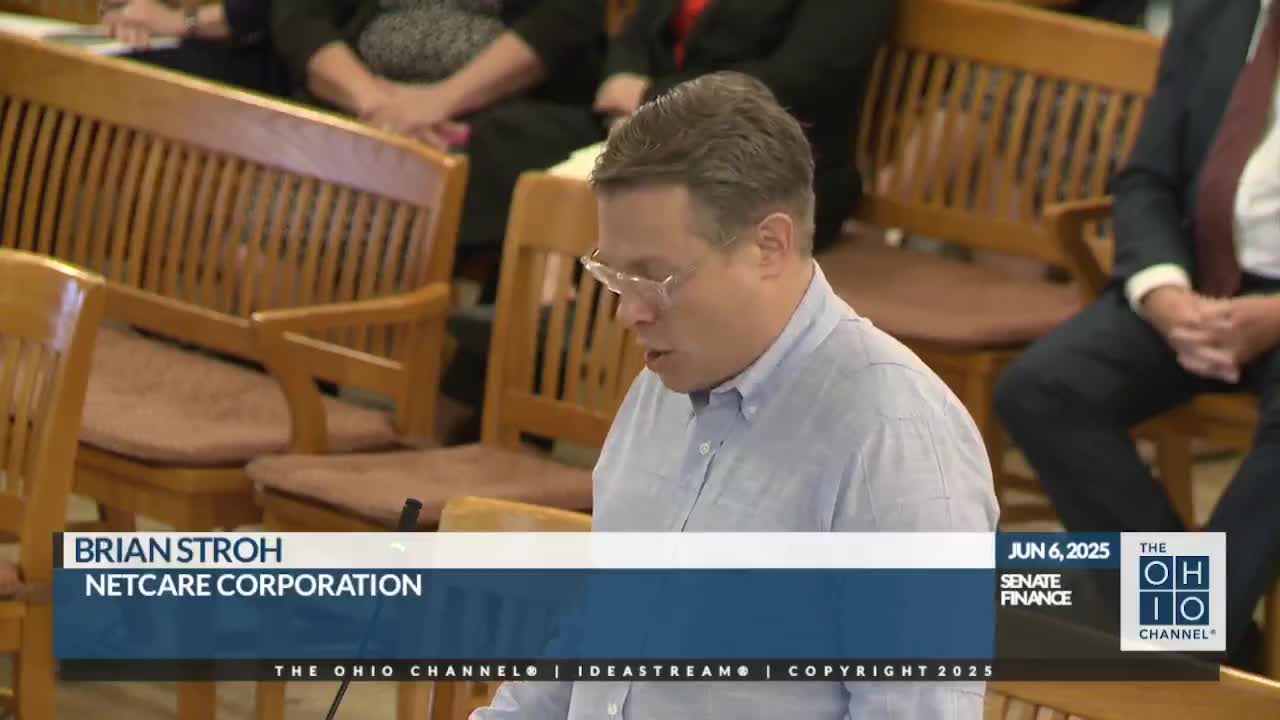Will Petrick urges Ohio Senate to restore funding for families and mental health services
June 06, 2025 | Finance, Senate, Committees, Legislative, Ohio
This article was created by AI summarizing key points discussed. AI makes mistakes, so for full details and context, please refer to the video of the full meeting. Please report any errors so we can fix them. Report an error »

Ohio's Senate Finance Committee convened on June 6, 2025, to address critical budgetary issues impacting mental health services, tax policies, and environmental regulations. A key focus of the meeting was the urgent call to restore funding for mental health and substance use care, with advocates urging the Senate to reinstate appropriations to $34 million for fiscal year 2026 and $41 million for fiscal year 2027. This funding is deemed essential for sustaining crisis care services that save lives.
Will Petrick, representing the Rise Together Innovation Institute, highlighted the pressing need for equitable tax relief, arguing that recent tax cuts have disproportionately benefited the wealthiest Ohioans. He pointed out that while the richest 1% receive significant tax breaks, low-income families are paying more in taxes than they did two decades ago. Petrick advocated for targeted tax relief, such as Governor DeWine's proposed $1,000 child tax credit for families earning under $94,000, emphasizing that nearly 40% of households struggle to afford basic necessities.
The meeting also addressed potential cuts to Medicaid expansion, which could jeopardize healthcare coverage for approximately 770,000 Ohioans. Advocates warned that such cuts would exacerbate financial hardships for vulnerable populations, pushing more individuals into medical debt and emergency care.
Additionally, Jen Klein from the Ohio Chemistry Technology Council expressed support for reinstating community air monitoring provisions that had been removed from the budget. She emphasized the importance of scientifically accurate air quality data for regulatory actions, advocating for measures that ensure public health is prioritized in environmental monitoring.
The discussions underscored a critical juncture for Ohio's budget, with advocates urging lawmakers to prioritize funding for essential services and equitable tax policies that support working families. As the committee continues its deliberations, the implications of these decisions will resonate throughout the state, impacting the health and economic security of many Ohioans.
Will Petrick, representing the Rise Together Innovation Institute, highlighted the pressing need for equitable tax relief, arguing that recent tax cuts have disproportionately benefited the wealthiest Ohioans. He pointed out that while the richest 1% receive significant tax breaks, low-income families are paying more in taxes than they did two decades ago. Petrick advocated for targeted tax relief, such as Governor DeWine's proposed $1,000 child tax credit for families earning under $94,000, emphasizing that nearly 40% of households struggle to afford basic necessities.
The meeting also addressed potential cuts to Medicaid expansion, which could jeopardize healthcare coverage for approximately 770,000 Ohioans. Advocates warned that such cuts would exacerbate financial hardships for vulnerable populations, pushing more individuals into medical debt and emergency care.
Additionally, Jen Klein from the Ohio Chemistry Technology Council expressed support for reinstating community air monitoring provisions that had been removed from the budget. She emphasized the importance of scientifically accurate air quality data for regulatory actions, advocating for measures that ensure public health is prioritized in environmental monitoring.
The discussions underscored a critical juncture for Ohio's budget, with advocates urging lawmakers to prioritize funding for essential services and equitable tax policies that support working families. As the committee continues its deliberations, the implications of these decisions will resonate throughout the state, impacting the health and economic security of many Ohioans.
View full meeting
This article is based on a recent meeting—watch the full video and explore the complete transcript for deeper insights into the discussion.
View full meeting
